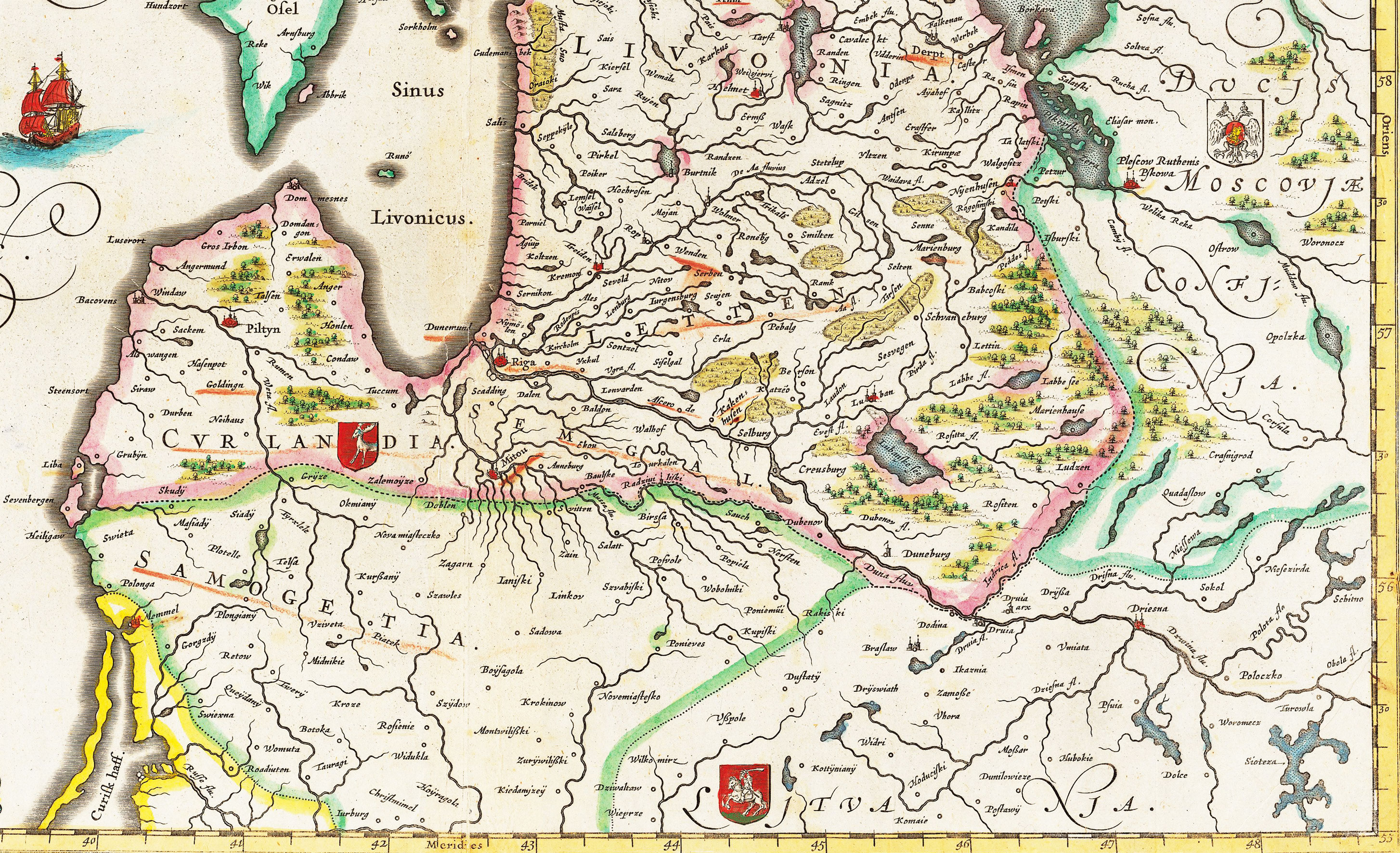Samogitians on:
[Wikipedia]
[Google]
[Amazon]
Samogitians ( Samogitian: ''žemaitē'', , ) are the inhabitants of
 Samogitians lived in western Lithuania and were closely related to
Samogitians lived in western Lithuania and were closely related to Perepis.ru
(in Russian)
Short history of Samogitia
{{InterWiki, code=bat-smg Ethnic groups in Lithuania Samogitia
Samogitia
Samogitia, often known by its Lithuanian language, Lithuanian name ''Žemaitija'' (Samogitian language, Samogitian: ''Žemaitėjė''; see Samogitia#Etymology and alternative names, below for alternative and historical names) is one of the five ...
, an ethnographic region of Lithuania. Many speak the Samogitian language
Samogitian ( or sometimes , or ; ), is an Eastern Baltic language spoken primarily in Samogitia and is often considered a dialect of Lithuanian.
It has preserved many features of the extinct Curonian language, such as specific phonologica ...
, which in Lithuania
Lithuania, officially the Republic of Lithuania, is a country in the Baltic region of Europe. It is one of three Baltic states and lies on the eastern shore of the Baltic Sea, bordered by Latvia to the north, Belarus to the east and south, P ...
is mostly considered a dialect of the Lithuanian language together with the Aukštaitian dialect. The Samogitian language differs the most from the standard Lithuanian language.
Whether Samogitians are considered to be a distinct ethnic group or merely a subset of Lithuanians
Lithuanians () are a Balts, Baltic ethnic group. They are native to Lithuania, where they number around 2,378,118 people. Another two million make up the Lithuanian diaspora, largely found in countries such as the Lithuanian Americans, United Sta ...
varies. However, 2,169 people declared their ethnicity as Samogitian during the Lithuanian census of 2011, of whom 53.9% live in Telšiai County. The political recognition and cultural understanding of the Samogitian ethnicity has, however, changed drastically throughout the last few centuries as 448,022 people declared themselves Samogitians, not Lithuanians, in the 1897 Russian Empire census.
History
On 13 July 1260, the Samogitians decisively defeated the joint forces of theTeutonic Knights
The Teutonic Order is a Catholic religious institution founded as a military society in Acre, Kingdom of Jerusalem. The Order of Brothers of the German House of Saint Mary in Jerusalem was formed to aid Christians on their pilgrimages to t ...
from Prussia
Prussia (; ; Old Prussian: ''Prūsija'') was a Germans, German state centred on the North European Plain that originated from the 1525 secularization of the Prussia (region), Prussian part of the State of the Teutonic Order. For centuries, ...
and Livonian Order
The Livonian Order was an autonomous branch of the Teutonic Order,
formed in 1237. From 1435 to 1561 it was a member of the Livonian Confederation.
History
The order was formed from the remnants of the Livonian Brothers of the Sword after thei ...
from Livonia
Livonia, known in earlier records as Livland, is a historical region on the eastern shores of the Baltic Sea. It is named after the Livonians, who lived on the shores of present-day Latvia.
By the end of the 13th century, the name was extende ...
in the Battle of Durbe
The Battle of Durbe (, , ) was a medieval battle fought near Durbe, east of Liepāja, in present-day Latvia during the Livonian Crusade. On 13 July 1260, the Samogitians soundly defeated the joint forces of the Teutonic Knights from Prussia (r ...
. Some 150 knights were killed, including Livonian Master Burchard von Hornhausen and Prussian Land Marshal Henrik Botel.
 Samogitians lived in western Lithuania and were closely related to
Samogitians lived in western Lithuania and were closely related to Semigallians
Semigallians (; ; also ''Zemgalians'', ''Semigalls'' or ''Semigalians'') were the Balts, Baltic tribe that lived in the south central part of contemporary Latvia and northern Lithuania. They are noted for their long resistance (1219–1290) agai ...
and Curonians
:''The Kursenieki are also sometimes known as Curonians.''
The Curonians or Kurs (; ) were a medieval Balts, Baltic tribe living on the shores of the Baltic Sea in the 5th–16th centuries, in what are now western parts of Latvia and Lithuania. ...
. In 1413, they became the last group of Europeans to convert to Christianity. Samogitians lived in the Duchy of Samogitia
The Duchy of Samogitia (, , ) was an administrative unit of the Grand Duchy of Lithuania from 1422 (and from 1569, a member country of the Polish–Lithuanian Commonwealth). Between 1422 and 1441 it was known as the Eldership of Samogitia. Si ...
within the Grand Duchy of Lithuania
The Grand Duchy of Lithuania was a sovereign state in northeastern Europe that existed from the 13th century, succeeding the Kingdom of Lithuania, to the late 18th century, when the territory was suppressed during the 1795 Partitions of Poland, ...
. In 1857, there were 418,824 people of Samogitian roots and 444,921 persons declared the Samogitian language as their mother tongue in 1897 in Kovno Governorate
Kovno Governorate was an administrative-territorial unit (''guberniya'') of the Russian Empire, with its capital in Kovno (Kaunas). It was formed on 18 December 1842 by Tsar Nicholas I of Russia, Nicholas I from the western part of Vilna Govern ...
. Currently Lithuania does not allow for declaration of Samogitian nationality in passports as it is not a recognized ethnicity. In list of ethnic groups of Russia there is one person who declared himself with "Zhemaijty".(in Russian)
Exonyms
Samogitians call themselves ''žemaitē'', although exonyms are used in different languages.References
External links
Short history of Samogitia
{{InterWiki, code=bat-smg Ethnic groups in Lithuania Samogitia